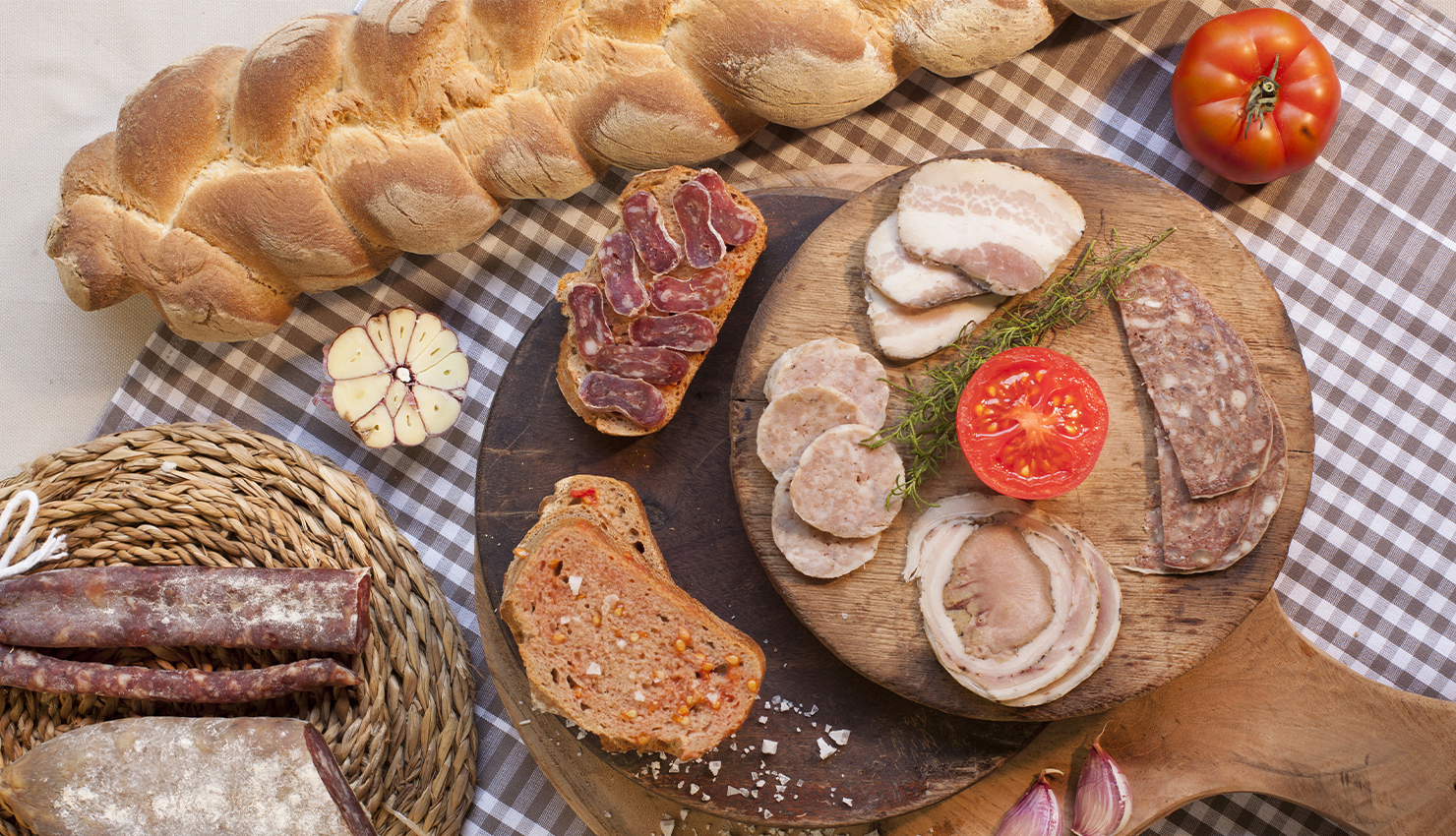From 14 to 18 September, the Andorran principality will host Andorra Taste, the first High Mountain Gastronomy event. Five days where the culinary culture of the territory will be showcased, as well as being accompanied by renowned national and international chefs.
The first edition of Andorra Taste is presented with the aim of showing the values that form part of its gastronomy. From sustainability and local products, to the influence and culinary relationship between the neighbouring countries; France and Spain. Andorra is a destination which, throughout its history, has combined traditions from Catalonia and the south of France in its dishes. Thus creating unique recipes, with the characteristic essence of the Andorran people. In fact, there are more than 400 culinary preparations that form part of the Recretariat of Andorran Gastronomy..

Sausages are an important part of Andorran gastronomy. They are made in the most traditional way possible so as not to lose that pure taste of Andorra.
During the first three days of the event, El Prat del Roure in Escaldes-Engordany will host hundreds of chefs, producers and professionals working in mountain environments. To be able to enjoy it, prior registration is required, but, even so, from the Andorra Taste website you can follow it online. Meanwhile, from the 16th to the 18th, the entrance will be open to everyone who wants to join in. A gastronomic meeting that is enhanced by the presence of leading chefs. Aníbal Criollo, chef of the Naturalia restaurant, will show the importance of maintaining and caring for the environment. In addition, Rodolfo Guzmán, chef of the award-winning Chilean restaurant Boragó or the French Michel Bras, of the restaurant Bras, will reflect the soul of their territories on their dishes.
Centuries-old recipes waiting for you in Andorra
The rustic constructions, called bordas, where cattle and food used to be kept, are nowadays the restaurants that continue with the gastronomic tradition. In the small territory, there is a wide range of places to enjoy homemade food. From Borda de l’Hortó, which is in the town of Ransol, Borda Vella and Borda del Tremat in Encamp or Borda Patxeta in Canillo. In the latter town, this summer, they inaugurated their own suspension bridge. The Tibetan Bridge, is the second longest in the world. Suspended in the air and flying over the Vall del Riu, Andorra captivates not only for its gastronomy, but also for its initiatives to venture into nature;

Escudella, a legendary dish that prepares diners to warm up in the cold winters. A soup that combines meats such as bacon, ham or chicken with chickpeas and noodles.
One of the most typical spoon dishes is the escudella. A recipe of Catalan origin that is still present every winter. In the past, if there was a shortage, it was prepared with rice and vegetables, but its great characteristic is the combination of seasonal vegetables and meats. Another of the star dishes of the Pyrenean cuisine is the trinxat. Along with Cerdanya and l’Alt Urgell, Catalan areas, the dish has become very popular over the years. The ingredients are very simple, within everyone’s reach: cabbage, potatoes, bacon or black pudding. The flavour can be varied by including garlic, if desired.

From left to right: Andorran cannelloni, a very elaborate dish when it comes to cooking it in a traditional way, but that leaves very good satisfaction when tasting it. Canned snails, a recipe of Catalan origin that, thanks to its territorial proximity, has made Andorra fall in love with it. The snails are cooked in an aluminium tin, enhancing their flavour with spices such as pepper, garlic, parsley…
The cannelloni are still present on Catalan tables when the end of the year approaches. Especially on the day of Sant Esteve, accompanied by escudella (catalan stew) and galets soup. They were so famous in the 19th century that Andorra adapted its own recipe. A chopped mixture of lamb, pork and chicken wrapped in pastry, topped with béchamel sauce and cheese. As for fish, Andorran-style cod is still on the menu. Arriving in the Principality via the Basque Pyrenees, being able to salt it and let it dry facilitated its consumption far from the coast. Depending on the harvesting season, it can be perfectly combined with the products offered by the land at any time of the year. The Andorran version presents it with a sauce of prunes or sultanas, adding chopped crackers, almonds and garlic. This gives the fish a flavour that is a real treat for the palate.
Small products that enrich each dish in a special way.
To accompany the main courses there are always products that make a big difference through their flavour. Andorra is located in a place where you can find a great variety of mushrooms; from boletus, negrillas, murgas or níscalos. Enriching dishes in different ways depending on their use, introducing them into creams, rice dishes or meats. On the other hand, when autumn comes, and quinces are in the harvesting season, it is used to produce the aioli. The quince aioli, a condiment that combines perfectly with meat or fish.

From left to right: Andorran-style cod, a light dish that combines perfectly with rice or seasonal vegetables. Trinxat, a dish that reflects the cuisine of local produce and local food.
Finally, the bitter chicory, or better known as dandelion, is a plant that is usually consumed in salads. The parish in Canillo has it as one of its main dishes. Moreover, in traditional restaurants and bordas, it is a product used in their menus, offering travellers the chance to taste recipes they have never tried before. Apart from its nutritional value, it also has therapeutic properties, being used as a medicinal plant.
Images courtesy of VisitAndorra




